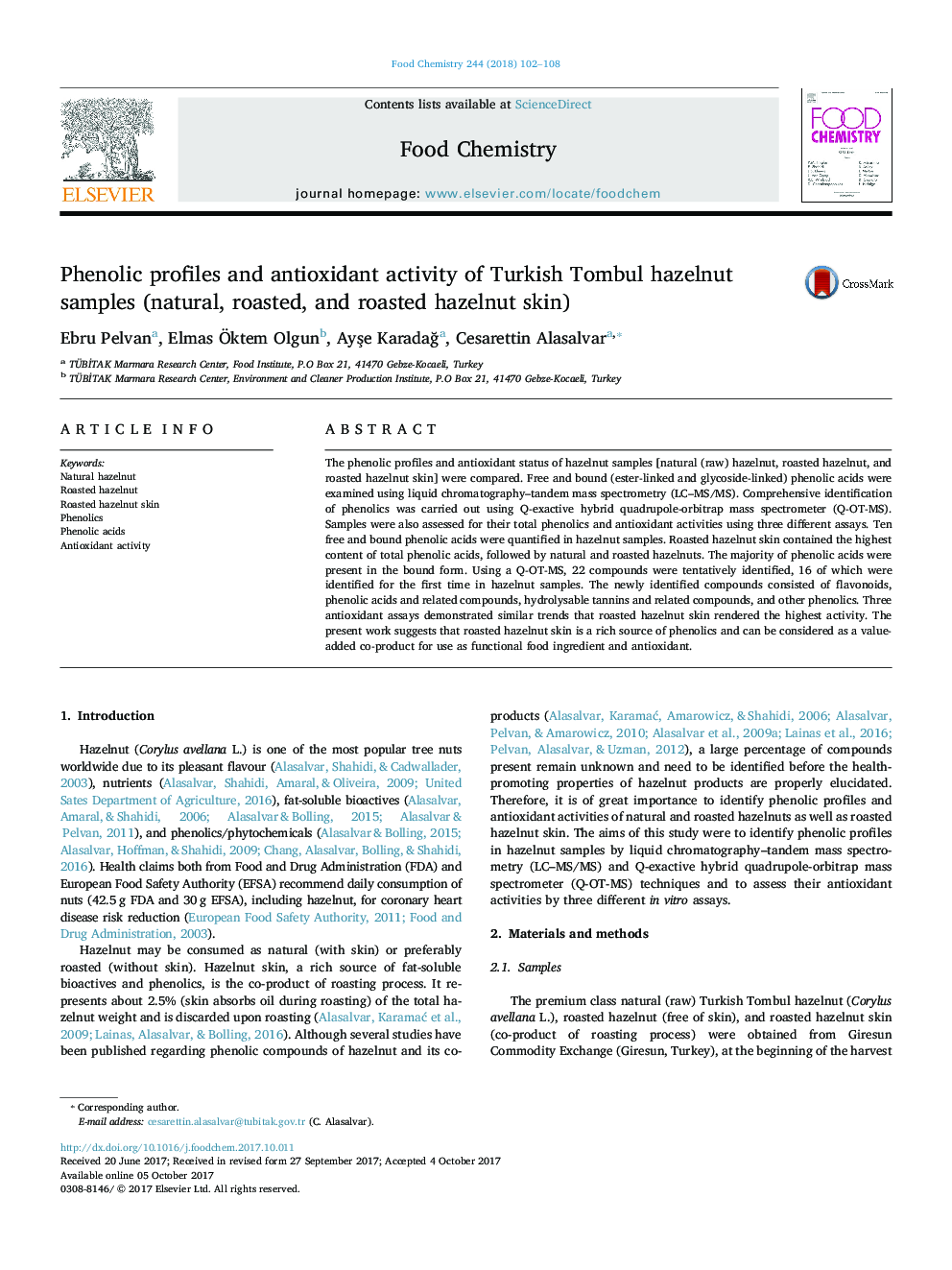| Article ID | Journal | Published Year | Pages | File Type |
|---|---|---|---|---|
| 5132394 | Food Chemistry | 2018 | 7 Pages |
â¢Sixteen phenolics were identified for the first time in hazelnut samples.â¢The majority of phenolics were present in the bound form of hazelnut samples.â¢Roasted hazelnut skin possessed the highest antioxidant activity among hazelnut samples.â¢Roasted hazelnut skin has potential to be used for functional food ingredients.
The phenolic profiles and antioxidant status of hazelnut samples [natural (raw) hazelnut, roasted hazelnut, and roasted hazelnut skin] were compared. Free and bound (ester-linked and glycoside-linked) phenolic acids were examined using liquid chromatography-tandem mass spectrometry (LC-MS/MS). Comprehensive identification of phenolics was carried out using Q-exactive hybrid quadrupole-orbitrap mass spectrometer (Q-OT-MS). Samples were also assessed for their total phenolics and antioxidant activities using three different assays. Ten free and bound phenolic acids were quantified in hazelnut samples. Roasted hazelnut skin contained the highest content of total phenolic acids, followed by natural and roasted hazelnuts. The majority of phenolic acids were present in the bound form. Using a Q-OT-MS, 22 compounds were tentatively identified, 16 of which were identified for the first time in hazelnut samples. The newly identified compounds consisted of flavonoids, phenolic acids and related compounds, hydrolysable tannins and related compounds, and other phenolics. Three antioxidant assays demonstrated similar trends that roasted hazelnut skin rendered the highest activity. The present work suggests that roasted hazelnut skin is a rich source of phenolics and can be considered as a value-added co-product for use as functional food ingredient and antioxidant.
